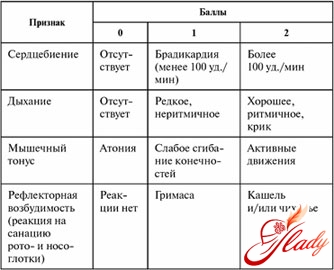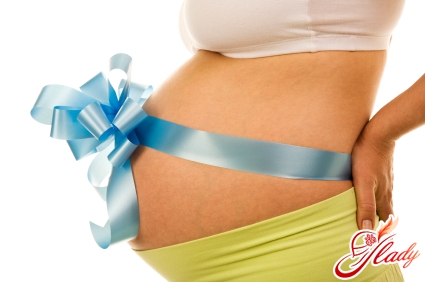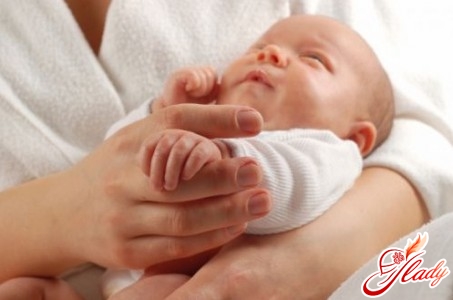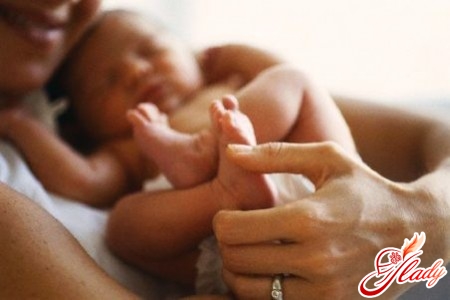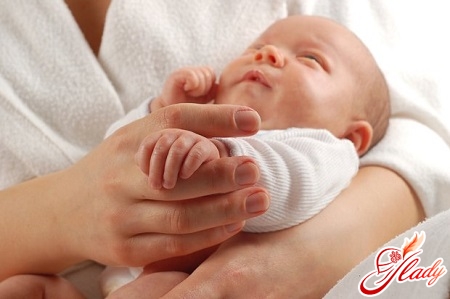
Every expectant mother is looking forward tothe birth of a little miracle. She prepares to meet the baby face to face for 9 months. However, many women are haunted by fear of childbirth. It can be avoided if you find out everything in advance and prepare. You should know how childbirth goes, how to ease contractions, what to take with you to the maternity hospital. It is important to remember that childbirth is a unique process. It goes differently for each woman. However, there are, of course, some common points. Childbirth is divided into stages.

Start of labor
Everything happens gradually.During the 9th month of pregnancy, the body is actively preparing for the upcoming birth. The placenta begins to change the hormonal background, various physiological processes are rebuilt. All this leads to the onset of labor. About 1-7 days before the birth of the fetus, the mucus plug should come off. It can come out in parts or all at once. It can be brown or beige, sometimes with streaks of blood. In consistency, it is lumpy mucus. Labor itself can begin with the discharge of water, or immediately with contractions. The discharge of amniotic fluid is a painless process. This happens when the amniotic sac bursts. It can rupture relatively far from the cervix. In this case, the water comes out gradually. Or the bladder bursts near the cervix. Then the water comes out in a continuous stream. If this happens, you should immediately go to the maternity hospital. The fact is that after the waters break, the baby in the uterine cavity no longer has protection from bacteria from the cervix and vagina. After the amniotic sac ruptures, the woman must give birth no later than 12 hours later. It is also necessary to pay attention to the color and structure of the fluid. Ideally, the amniotic fluid should be clean and transparent without any odors. If the fluid has a green or black tint, the baby may have oxygen starvation. The worst case scenario is that the amniotic fluid is mixed with blood. In this case, you must immediately call an ambulance: the placenta has separated and the baby's life is at risk. Contractions are contractions of the uterine muscles. They lead to the opening of the cervix and the expulsion of the fetus. Contractions are felt throughout the abdomen. In between, the muscles are relaxed. Sometimes it is difficult to determine the onset of contractions. Pain is almost not felt, the interval between contractions is more than half an hour. The duration of the first contractions is 5-10 seconds. Gradually, the intensity and duration of contractions increases, and the breaks between them become shorter.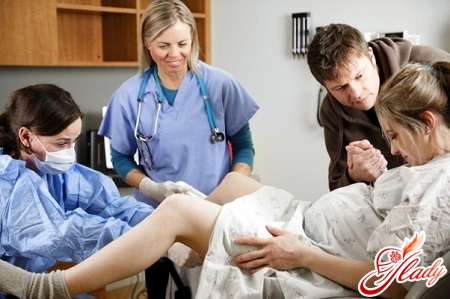
How to reduce pain?
Over time, the pain increases.This is due to the beginning of the opening of the cervix. The uterine ligaments tense and contract, and the nerve endings are compressed. This is how pain occurs during contractions. Sometimes the first unpleasant sensations appear in the lumbar region or lower abdomen. Many women note that at first, the pain during contractions is very similar to menstrual pain. Contractions proceed as follows: starting from the top of the uterus, the muscles begin to contract. Then the muscle contraction moves further to the lower abdomen. The intensity of the contraction gradually increases and reaches its peak, which lasts about 2-3 seconds. Then the muscles relax, the contractions pass, and the pain subsides for a while. To relieve discomfort, a woman needs to take the most comfortable position: lie on her side, get on all fours, etc. However, to speed up the labor process, it is better to walk while you have strength. When a contraction begins, it is advisable to massage the lower abdomen with stroking movements. You can also knead the lower back with your fists. Or massage the spine with your palm from the tailbone to the neck. However, to perform such manipulations, you need an assistant. Water is an excellent pain reliever during contractions. A warm shower or even a bath helps relieve pain. However, not all maternity hospitals can provide women with such amenities. As a rule, everything is limited to a shower before transferring to the prenatal department. An important point is the breathing technique. Oxygen, entering the blood, partially neutralizes substances that cause pain. The more air gets into the lungs, the easier it will be for the woman. During contractions, you need to breathe often, inhale through the nose and exhale through the mouth. In between contractions, you need to try to rest and save up strength for the next wave. You also need to monitor the intervals and intensity of uterine contractions by the clock. It is necessary to observe how the contractions are going. Dilation of the cervix is the longest and most painful period of labor. It can last up to 10 hours or more in primiparous women. Gradually, the period of contractions increases to 1.5 minutes, and the break between them is reduced to 1 minute.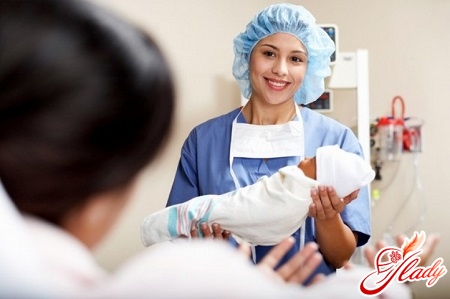
Exile of the fetus
The next stage of childbirth is expulsionfetus. Under the influence of contractions, the cervix should open by 10 cm. Then the head of the fetus goes down and passes to the pelvic floor. At this stage, pushing is added to the contractions. They are contractions of the diaphragm and abdominal muscles. Thanks to them, it is possible to increase the intra-abdominal pressure, and the child can move further along the birth canal. Pushing differs from contractions in that the woman is able to control them: restrain or, on the contrary, intensify them. During this period, it is very important to listen to the doctor. It is he who sees the whole process and knows when to intensify pushing, in other words, to push. If you act at your own discretion, you can harm yourself and the child. When necessary, the doctor makes an incision in the perineum. Such an operation is called an episiotomy. It helps to avoid ruptures in the birth canal. After the placenta has come away, a suture is placed on the incision. In this case, local or general anesthesia is used, depending on the degree of tissue damage. And after so much torment, the baby's head appears in the birth canal. A few more pushes - and the long-awaited miracle will finally happen. When the baby is born, it should cry: this is a natural reaction. The woman feels great relief after the baby is born. The pain subsides. The baby is placed on the mother's stomach. This is how the first physical contact "skin to skin" occurs. If there are no contraindications, the baby is put to the breast, and he sucks out a few precious drops of colostrum. However, this is not all. The birth has not yet happened. The baby and the woman are still connected to each other by one umbilical cord. It must be cut. This is a painless process, since there are no pain receptors in the umbilical cord. Then the baby is examined by a neonatologist (a doctor for newborns). The baby is weighed, measured, swaddled.
Birth of the placenta
The baby has already been born, but the contractions are still weakstill there. They are necessary to separate the placenta from the walls of the uterus and expel it. A couple of light pushing - and the placenta is born. This is the final stage of labor. It lasts from 5 to 30 minutes. Only now the woman's labor is over. After the birth of the baby, the uterus will cleanse itself for about 1-2 months. This process is accompanied by bloody discharge, similar to menstruation. If the bleeding is too heavy or the cleansing period lasts more than 2 months, you should consult a doctor. Now you know how labor goes. In order to feel confident and for the labor to go without complications, it is advisable to get acquainted with the doctors of the maternity hospital in advance and prepare the necessary things. A woman will need:
- documentation;
- clean clothes;
- robe and nightdress;
- slippers;
- personal hygiene products (toothbrush, soap, hairbrush, shampoo, toilet paper, etc.);
- gaskets;
- towel;
- disposable diapers;
- phone.
Usually photography and video shooting is allowed in the maternity hospital.Those who want to take pictures of their child immediately after birth can take a camera or video camera with them. That's probably all. If you prepare in advance, the woman will feel good and comfortable in the maternity hospital.




